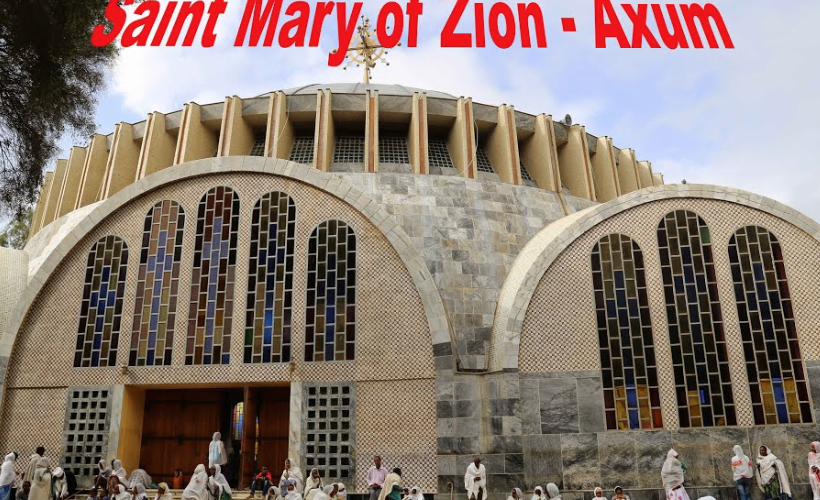While Americans focused on the dramatic conclusion of 2020 White House race, reports began circulating in the overseas press claiming that a sickening massacre had taken place in a famous church — a pilgrimage site for the Ethiopian Orthodox.
How famous? For centuries, church officials have claimed that the Church of St. Mary of Zion in Axum contains the Ark of the Covenant.
This was, from the start, a journalism horror story — since Ethiopian officials were preventing foreign journalists from reaching the site of the alleged massacre. At the same time, activists on both sides of the stunningly complex conflict appeared to be working hard to shape the coverage that was taking place.
The other day, a frustrated reader sent me this note, after seeing materials posted online attempting to undercut claims that this massacre of 700-plus believers took place. “I’ve trusted you and your sources for about five years now so I’m hoping you can help get to the bottom of this,” the reader said.
I told the reader that, to me, it appeared that this was a case in which — at this point — certainty was impossible. A careful reader would note that some journalists were saying that claims about the massacre could not be verified — either way. “Human rights activists on left and right are concerned about the report and believe the attack COULD have taken place. But there has been no verification that has been locked down certain,” I said.
If you want to see what we’re talking about, check out these early reports from Catholic News Agency (“Hundreds reportedly dead after massacre at Oriental Orthodox church in Ethiopia”) and The Church Times (“Massacre ‘of 750’ reported in Aksum church complex, Tigray, Ethiopia”).
This is, of course, an argument about the attribution of truth claims. When journalists cannot (for a variety of reasons) do on-site reporting to seek evidence, they frequently are forced to seek the best sources that are available to them (often via telephone or other forms of technology) and report what they can. Here is the crucial point: Journalists have to clearly identify the identity of the sources and let readers know what kind of access they would or would not have to the information.
This leads us to a recent Associated Press story with a headline stating, “ ‘Horrible’: Witnesses recall massacre in Ethiopian holy city.”
The key word is, of course, “witnesses.” Here is the top of the AP report:
NAIROBI, Kenya (AP) — Bodies with gunshot wounds lay in the streets for days in Ethiopia’s holiest city. At night, residents listened in horror as hyenas fed on the corpses of people they knew. But they were forbidden from burying their dead by the invading Eritrean soldiers.
Those memories haunt a deacon at the country’s most sacred Ethiopian Orthodox church in Axum, where local faithful believe the ancient Ark of the Covenant is housed. As Ethiopia’s Tigray region slowly resumes telephone service after three months of conflict, the deacon and other witnesses gave The Associated Press a detailed account of what might be its deadliest massacre.
For weeks, rumors circulated that something ghastly had occurred at the Church of St. Mary of Zion in late November, with estimates of several hundred people killed. But with Tigray cut off from the world and journalists blocked from entering, little could be verified as Ethiopian and allied fighters pursued the Tigray region’s fugitive leaders.
We can argue about phrases such as “Ethiopia’s holiest city,” since it’s hard to rank sacred mysteries and zip codes. But there is no question that, for these believers, we are talking about holy ground.
So who is the crucial eyewitness? Obviously, in the case, a name would be dangerous.
For me, everything pivots on whether AP managed to confirm that this witness is who he says he is and he remains at the location at the heart of this nightmare. Thus, readers are told:
The deacon, who spoke on condition of anonymity because he remains in Axum, said he helped count the bodies — or what was left after hyenas fed. He gathered victims’ identity cards and assisted with burials in mass graves.
He believes some 800 people were killed that weekend at the church and around the city, and that thousands in Axum have died in all. The killing continues: On the day he spoke to the AP last week he said he had buried three people.
“If we go to the rural areas, the situation is much worse,” the deacon said.
Is this man identified with one of the warring armies in this complex tragedy? That is a hard judgement to make and AP offers quite a bit of political and cultural background.
Once again, it matters that the government is not welcoming outsiders into this battleground.
When it comes to the massacre, everything — in terms of journalism — comes down to whether reporters and experts find the eyewitness reports to be credible. Here is another crucial piece of background:
Axum, with its ancient ruins and churches, holds major significance for the Ethiopian Orthodox faithful, who believe that the Ark of the Covenant, built to hold the tablets inscribed with the Ten Commandments, is located there.
“If you attack Axum, you attack first of all the identity of Orthodox Tigrayans but also of all Ethiopian Orthodox Christians,” said Wolbert Smidt, an ethnohistorian who specializes in the region. “Axum itself is regarded as a church in the local tradition, ‘Axum Zion.’”
In a normal year, thousands of people would have gathered at the Zion church in late November to celebrate the day Ethiopians believe the Ark of the Covenant was brought there after it disappeared from Jerusalem in ancient times. Instead, the church had become a refuge for people who fled the fighting elsewhere in Tigray.
For me, this final detail was haunting. What is happening at this actual sanctuary where, witnesses say, so many were slaughtered?
The rites of Ethiopian Orthodoxy continue, of course, as they have for centuries:
The deacon has not gone to the villages outside Axum. His work remains with his church, where services continue even as he says the Tigray conflict is as fierce as ever.
“We’re also protecting the church,” he said. “Even now, I’m talking to you from there. We are not armed. What we do is mostly watching. And, of course, praying that God protects us.”
FIRST IMAGE: Screenshot from YouTube video about the Church of St. Mary of Zion.










